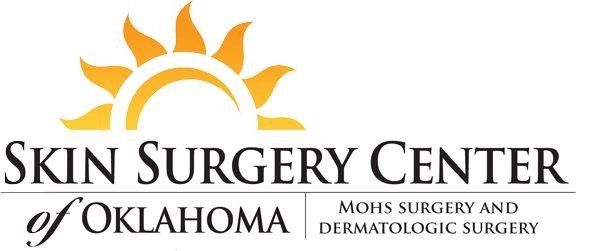Frequently Asked Questions
What is Mohs Micrographic Surgery?
Mohs surgery is an advanced treatment option for the removal of skin cancers. The procedure was developed in the 1930s by Dr. Fred Mohs at the University of Wisconsin. Since that time, Mohs surgery has become the worldwide gold standard for precise skin cancer removal. Mohs surgery is best suited for skin cancers that require a thorough removal and examination of tissue in order to ensure that the cancer has been completely removed.
I don't see anything after my biopsy. Do I really need to be treated?
Yes. After a biopsy site heals, normal looking skin often hides deeper cancer. These cancer cells can continue to grow downward and outward—similar to the roots on a tree. These “roots” are not visible to the naked eye. If these roots are not removed, the tumor will reappear. This can often result in more extensive surgery. In some cases, these cancer cells can invade nearby structures or spread to lymph nodes and other organs.
Why does my skin cancer need to have Mohs surgery?
Mohs surgery provides the highest cure rate and is appropriate for most types of skin cancers. It is especially suitable for skin cancer that:
- Is in a cosmetically sensitive area
- Was treated previously and has grown back
- Is located near scar tissue from a previous procedure, surgery, or trauma
- Is large
- Does not have clearly defined edges
- Is growing rapidly or uncontrollably
- Is of an aggressive subtype (i.e., sclerosing or infiltrating basal cell carcinoma)
- Develops in patients who have suppressed immune systems such as organ transplant or lymphoma patients
How long does Mohs surgery take?
Most Mohs cases can be completed in three or fewer stages, requiring less than four hours. However, some cancers develop “roots” that extend widely or deeply. Therefore, it is advisable to reserve the entire day for this surgical procedure.
Will Mohs surgery leave a scar?
Yes. All skin surgery will leave a scar regardless of the technique or surgeon performing the surgery. Mohs surgery preserves as much healthy skin as possible and maximizes options for repairing the wound after cancer removal. The three major priorities for a Mohs surgeon are complete removal of the cancer, retaining full function of the affected area, and obtaining an excellent cosmetic result. Post-surgical scars and redness improve greatly each week, month, and up to 1 year. Your surgeon will recommend post-operative wound care that will minimize scarring. If there are problems with a scar’s healing, injections or other treatments may be used to optimize the cosmetic result. Most scars after Mohs surgery are minimally visible after months to 1 year.
What type of anesthesia is used for the surgery?
You will be awake during surgery. Your surgeon will completely numb the skin cancer site with local anesthesia prior to surgery. If you are very anxious prior to surgery, please ask our office about an oral medication that will help put you at ease. Most patients do not require oral medication but we are happy to discuss this option with you if desired.
What to know before surgery and the morning of the surgery
Do I need someone to drive me home?
We require a driver if your cancer site is located on the face, otherwise, it is usually acceptable to drive yourself.
What do I need to bring?
If you are a new patient, please bring a current medication list, the paperwork we mailed to you or that you printed from our website, photo identification, and your insurance card(s). If you are a current patient please bring a current medication list, photo identification, and your insurance card(s). We would like to make the time you spend with us as pleasant and comfortable as possible. Please bring reading material, a tablet, or a laptop to occupy your time. We have wireless internet available for your use. Please consider bringing snacks or food with you in case you are in our office for an extended period of time. If needed, your companion may bring you a snack or lunch. We ask that you stay in our office until your surgery is completed and you are discharged home.
Can I eat breakfast?
Yes, please eat prior to your surgery UNLESS you are specifically instructed not to do so.
Do I need to take my medications?
Continue all medications prescribed by your doctor including blood thinners. If you take Warfarin, Coumadin or Jantoven you will need to have an INR level result within one week of your surgery date. If you are taking aspirin, ibuprofen, or herbal supplements without your doctor’s orders, please discontinue them 10 days prior to your surgery appointment. These include ibuprofen, Anacin, Bufferin, Exederin, Alka Seltzer, Advil, Aleve, Motrin, Oral Vitamin E, and Ginko Biloba.
Should I stop smoking or using alcohol prior to surgery?
Yes! Please stop smoking at least 1 week prior to surgery and 1 week after surgery. If you cannot stop smoking, please decrease your usual smoking by at least half. Smoking can result in failure of your wound repair secondary to decreased oxygen in the skin. Please do not drink alcohol 2 days before and 2 days after surgery. Alcohol can cause bleeding.
If I’m on oxygen at home, should I bring oxygen to my surgery?
Our office does not have a supply of oxygen so please bring enough oxygen to last an entire day.
What are the risks of Mohs micrographic surgery?
Complications after Mohs surgery are very uncommon. Most patients have minimal to no problems after surgery and have excellent cosmetic outcomes. The most common risks are below. Our doctors will discuss any additional risks associated with your particular case prior to surgery.
● Bleeding
● Infection
● Scar
● Nerve damage. Damage to nerves that control movement is very rare. Damage to nerves that provide sensation to the skin most often resolves over weeks to a year.
● Cancer recurrence. Most cancers only have a 1% chance of recurrence.
What to know after surgery
Will I have a bandage?
You will have a bandage to protect your surgical site, to promote wound healing, and to decrease the risk of post-surgery bleeding. The size and type of bandage will vary depending on the location and size of the wound.
How will I care for my wound?
Detailed verbal and written wound care instructions will be provided upon discharge from our office. You will likely need bandaging supplies and plain petrolatum ointment/Vaseline for wound care. Please do not use topical antibiotics. We also often recommend a silicone scar gel to minimize scarring. You will likely use this 2 months after surgery.
Will I need to return after the procedure?
Please plan to return to our office in 5-7 days for a wound check and/or stitch removal. Occasionally, your wound check will be 2 to 4 weeks after surgery.
Do I need a plastic surgeon for repair?
After the skin cancer has been completely removed, a decision is made on the best repair option for your wound. These methods include letting the wound heal by itself, closing the wound in a side-to-side fashion with stitches, or closing the wound with a skin flap or graft. All wound repairs are performed by Dr. Rhinehart or Dr. Mollet immediately after cancer removal. Dr. Rhinehart and Dr. Mollet are formally trained in reconstructive and plastic surgery techniques. They will only refer you for reconstruction when general anesthesia is needed or if you specifically request a referral to a plastic surgeon.
Screenings
Skin cancer is very curable when caught early. Schedule your routine screening now!
Forms
Save time on appointment day. Print and complete your new patient forms here.
Contact
Schedule an appointment or contact us with questions about our services.





